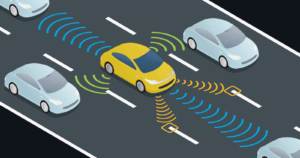Choosing the right gearbox for your car is an important decision that significantly affects your driving experience. You have two popular options: Dual Clutch Transmission (DCT) and Continuously Variable Transmission (CVT). Both transmissions have their unique advantages and disadvantages. However, when it comes to which gearbox is better, the answer is complex. In this article, we shall take an in-depth look at the differences between the DCT and CVT gearboxes, examining their features, benefits and drawbacks.
What is a DCT gearbox?
A dual-clutch transmission (DCT) is an advanced automated mechanical transmission that uses two separate clutches for odd and even gears stacked inside one housing. This gearbox essentially combines the efficiency and control of a manual gearbox with the convenience of an automatic transmission.
How it works:
One clutch manages the odd number gears while the other handles the even gears. By pre-selecting the next likely gear while one clutch is engaged, lightning-fast shifts occur within milliseconds by swapping transmission between the two gears with no torque interruption. Both clutches have their own input shaft from the engine flywheel.
What is a CVT gearbox?
A continuously variable transmission (CVT) is a type of automatic gearbox that matches engine rotation speed smoothly to wheel speed requirements without fixed gear ratios. It uses a segmented steel belt or chain running between two variably sized pulleys for gear ratio variance rather than meshed gear sets. One pulley is attached to the engine input, while the other is linked to a gear train leading to the eventual drive wheels.
How it works:
By altering the effective diameters of the input and output pulleys infinitely, seamless acceleration is achieved across the rpm range without harsh gear shifts. The input pulley radius decreases as the engine revs rise while simultaneously, the output pulley diameter increases proportionally. This keeps the belt tension constant regardless of speed adjustments.
DCT vs CVT: Comparison
When it comes to CVT vs DCT gearbox, there are several factors to consider, including performance, fuel economy, cost, maintenance and durability. Here is the comparison of DCT and CVT based on different factors.
DCT vs CVT: Performance
Here is the performance comparison between DCT and CVT gearboxes.
| Factors | DCT | CVT |
|---|---|---|
| Gearshift time | Lightning fast | Seamless driving experience |
| Type of vehicles | High-performance and sports cars | Mainstream vehicles |
- DCT transmissions are preferred for their faster, sharper gear changes, lending better acceleration and responsiveness suited to high-performance vehicles.
- The ultra-short gear change intervals of a DCT allow for staying in the engine’s optimal power range.
- CVT gearboxes provide a smooth but more gradual buildup of speed, lacking the urgent downshifts of DCTs required for quick overtaking or hills.
- DCTs prove significantly faster on track scenarios while also being more fun to drive aggressively, thanks to their rapid-fire dual clutch gear changes.
DCT vs CVT: Efficiency
Here is the efficiency comparison for transmissions.
| Factors | DCT | CVT |
| Mileage | Slightly lower mileage | Higher fuel efficiency |
| Responsiveness | Highly responsive | Slightly sluggish |
- Well-programmed CVTs offer better fuel efficiency in urban stop-go traffic, optimising engine rpm for the speed required.
- DCTs fall short of CVT fuel economy in congested cities but match or exceed them on highways via tall gearing.
- CVTs have an edge with lower drivetrain friction losses, given fewer components to spin the wheels.
- DCTs compensate through ultra-smooth no-lift shifts and keeping engine rpm in peak efficiency band via close gear ratios.
DCT vs CVT: Cost
Regarding the cost comparison of DCT and CVT, DCT can be expensive to manufacture and maintain. In contrast, the CVT gearbox is less expensive. However, the price of CVT can differ between the make and model of the vehicle.
- Complex dual clutch packs, controls and extra components escalate DCT manufacturing pricing.
- Mass market CVT adoptions in subcompact segments make them significantly cheaper to build, benefitting from scale.
- Replacement costs of a damaged CVT belt or variator pulleys are lower than dual-clutch repairs.
- High-performance sports models may charge a premium for the DCT option, counting its superiority despite higher build costs.
DCT vs CVT: Maintenance
DCT and CVT require regular maintenance and can be prone to wear and tear. That said, the Dual Clutch Transmission gearbox is complex and requires specialised care, while the Continously Variable Transmission gearbox can be less durable than other types of car gearboxes.
- CVT steel belts and variator pulleys require periodic oil changes and inspections after 20-40k kilometres
- Dual clutch facings in DCT boxes are consumable items needing replacement around 100k miles
- Labour charges tend to be higher for DCT repair jobs compared to CVT gearbox maintenance or belt replacements
- Hard-driven DCT cars will require clutch pack servicing earlier compared to placid highway CVT usage
CVT vs DCT: Advantages and disadvantages
Here are the primary benefits and drawbacks of DCT and CVT gearboxes.
Advantages of the DCT gearbox
- Lightning quick gear changes under 100 milliseconds via pre-selected gears
- Maximizes engine operating range, improving power delivery and fuel efficiency
- Sports car-like responsiveness and control from ultra-short gear ratios
- Eliminates shift shock by keeping the driveline engaged via dual clutches
- Enhanced throttle response and acceleration performance from two input shafts
Disadvantages of the DCT gearbox
- Higher complexity adds weight and pricing significantly over basic automatics
- Concentrated heat buildup on dual clutch facings limits torque handling ability
- Repair and rebuild costs are often considerably expensive
- May suffer premature wear of friction facings with predominantly city usage
Advantages of the CVT gearbox
- Stepless gear changing enables smooth driving without sudden RPM changes
- Exceptionally fast ratio changes to optimize engine speed and save fuel
- Simpler mechanics with fewer friction components improves reliability
- Compact, lightweight construction allows packaging advantages
- Lower manufacturing costs than conventional automatics benefit economy cars
Disadvantages of the CVT gearbox
- Rubberband feel lacks driver engagement for spirited performance
- Lower torque threshold restricts usage in high-power vehicles
- Steel belt and pulley repairs are needed at fairly routine intervals
- Limited control compared to DCT when sudden kick down shifts are required
- Perceived cheap or unpleasant driving dynamics by pro drivers
DCT vs CVT: Which is better?
Both Dual Clutch Transmission (DCT) and Continuously Variable Transmission (CVT) gearboxes are unique and cater to different needs. CVT can be better if you want a smooth and efficient driving experience. However, if you are looking for lightning-fast gear shifts and better acceleration, DCT can be a better choice when considering the CVT vs DCT debate. Here’s a more detailed explanation:
For Performance Driving:
Dual-clutch transmissions are the decisively superior choice for driving enjoyment and racing purposes. Their incredibly quick shift times while remaining in the power band create sports car-like acceleration where lag is unacceptable. DCTs also allow banging downshifts for aggressive deceleration – an engaging experience.
For Daily Commuting:
The optimal gear ratios suiting any speed that CVTs provide make them ideal for stop-start city runs. Their smooth progression favours comfort while retaining engine efficiency. Traffic predictability doesn’t warrant complex DCTs needing constant gear analysis.
For Highway Cruising:
Lengthy drives achieve peak drivetrain efficiency and lowered NVH levels in a DCT via customized gear set selection for intended speeds. Adaptive cruise features also complement DCTs’ seamless auto shifts between gradients. CVT characteristics are less suited to highway use.
For Off-Roading:
A crawler or low-range gear mode optimizes DCTs for the technical requirements like torque modulation expected in treacherous off-road conditions. CVTs lack the control needed in slippery traction-challenged scenarios.
For Towing Heavy Loads:
Sturdy DCT gearboxes can reliably handle higher torque inputs from lugging campers or trailers without hesitation, avoiding CVTs’ risk of belt/pulley slippage when engine power is suddenly needed.
In conclusion, DCT technology provides driving enthusiasts with superior experience and flexibility to handle varied use case priorities. For those focused purely on transportation, CVT’s simplicity and economy carry mass appeal.
Best DCT cars in India 2024
Here are some top DCT cars in India.
| Car | Engine | Fuel Efficiency | Ex-showroom Price |
|---|---|---|---|
| Honda Amaze | 1.2-litre petrol | 18.60 kmpl | Rs. 8.50 lakh onwards |
| Honda City | 1.5-litre petrol | 18.40 kmpl | Rs. 13.62 lakh onwards |
| Nissan Magnite | 1.0-litre turbo petrol | 19 kmpl | Rs. 9.93 lakh onwards |
| Honda Jazz | 1.2-litre petrol | 17.10 kmpl | Rs. 9.18 lakh onwards |
| Renault Kiger | 1.0-litre turbo petrol | 19 kmpl | Rs. 10.45 lakh onwards |
| Hyundai Verna | 1.5-litre turbo petrol | 16.50 kmpl | Rs. 13.50 lakh onwards |
| Hyundai Creta | 1.5-litre petrol | 16.50 kmpl | Rs. 16.26 lakh onwards |
| Kia Seltos | 1.5-litre petrol | 16.50 kmpl | Rs. 14.65 lakh onwards |
| MG Astor | 1.5-litre petrol | NA | Rs. 13.50 lakh onwards |
| Toyota Hyryder | 1.5-litre petrol hybrid | 28 kmpl | Rs. 15.61 lakh onwards |
| MG Hector | 1.5-litre turbo petrol | 14 kmpl | Rs. 15 lakh onwards |
| Maruti Suzuki Grand Vitara | 1.5-litre turbo petrol | 28 kmpl | Rs. 18 lakh onwards |








заказать проститутку
There’s a meditative cadence to your sentences. Each pause feels deliberate, allowing reflection to settle and meaning to expand naturally in the reader’s mind.